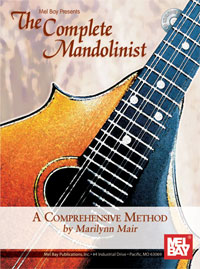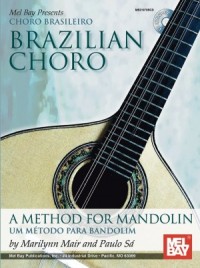This article was originally published in Mandolin Magazine, Spring 2005.
Download a pdf for the music that accompanies this article: Praetorius_4
I’ve decided to take a break from strict technique for the next few issues, and turn instead to musicianship. For while it’s important to improve your technical skills, it’s equally important to learn to play musically, with a feel for the sensibility of the pieces you choose to perform. As a classical mandolinist you have access to over 500 years of written music, but you won’t play any of it really well if you don’t consider historical context.
A piece written in the 18th century should sound different, when performed, from a piece written in the centuries on either side. Part of this has already been taken care of by the composers. But part of it still rests with the performer, and your interpretations should work to accentuate the differences in the style periods, not homogenize them. It’s not necessary to study music history for years, but if you’re going to put together an interesting and varied program, and be the sort of performer that audiences return to hear again, you’d do well to learn something about the role of musical style in performance.
We’ll start off near the beginning, with a dance tune from the late Renaissance. “Renaissance” means “rebirth” and the period signaled a new optimism and a renewed interest in the arts. The Renaissance in music dates from around 1450 to 1600, although a rebirth of interest in scholarship and art was evident by 1300. Renaissance instrumental music was often written for “consorts” of similar instruments — small groups of recorders, or viols (early bowed strings) playing one to a part. Pieces were usually written without a particular instrumentation in mind, simply four parts versatile enough to be played by whatever group of instruments was at hand. So Renaissance music, especially dances, can work well for consorts of mandolins.
The example for this issue is a dance written by Michael Praetorius, a German composer from the late Renaissance who worked as an organist and choirmaster in the Lutheran church. He was a prolific creator of sacred music and is perhaps best known today, outside of academic circles, for his lovely Christmas song, “Lo How a Rose Ere Blooming”. But he also wrote a collection of 312 popular dances known as the “Terpsichore”. The “Danse du roi” (King’s Dance) that I’ve arranged for this issue is one of those tunes, and it shows the elegance and grace of late Renaissance courtly dance. It’s written in four parts, and I’ve transposed it to a key where all four can be played by mandolins in the 1st position.
The dance has a strong consistent beat, but the parts show an independence of rhythm that will make the simple lines a bit challenging to put together. I’ve written it out in score form to show the interaction of the four parts. Technically, good counting is necessary for all the players. And everyone has to learn to hear the composite rhythm of the piece, and be aware of the flow from one part to the next. Play calmly, legato, but without tremolo. Notice that there are no rests in the music, so keep your left-hand fingers down to sustain each note for its full length. All 8th-notes should be considered pick-ups to the next quarter or half note. If you play this way you will draw the listeners’ attention to the gentle forward momentum central to the dance’s design. Contrasts in dynamics should occur naturally and shouldn’t be extreme. You can repeat the piece several times, and you may want to vary tone color a bit between repetitions. Try having all players play near the bridge, for a sharper tone, or above the sound hole for a warmer “dolce” sound.
The calm elegance of Renaissance music can be an oasis in the cacophony of modern life. A suite of Renaissance dances makes a good opening for a concert, focusing the audience and giving their ears a chance to take in the sound of the plucked strings. And if you have any friends getting married, this would be an excellent processional. So gather your consort and enjoy this lovely dance.
Go back to mandolin articles page



